Barcelona, the vibrant capital of Catalonia in Spain, is a city renowned for its rich history, captivating culture, and most notably, its breathtaking architecture. From the whimsical wonders of Antoni Gaudí to the proud heritage of Gothic treasures, Barcelona offers a stunning array of architectural masterpieces that leave visitors awestruck. So, let’s embark on a journey to explore the captivating architectural landscape of this remarkable city.
More:Read About On Beauty of Gaudí’s Architecture in Barcelona, Spain
One cannot talk about Barcelona’s architecture without mentioning the iconic works of Antoni Gaudí. His distinctive style, characterized by organic shapes, intricate details, and vibrant colors, has shaped the city’s identity and made it an architectural mecca. Let’s start with his most famous creation, the Sagrada Familia.
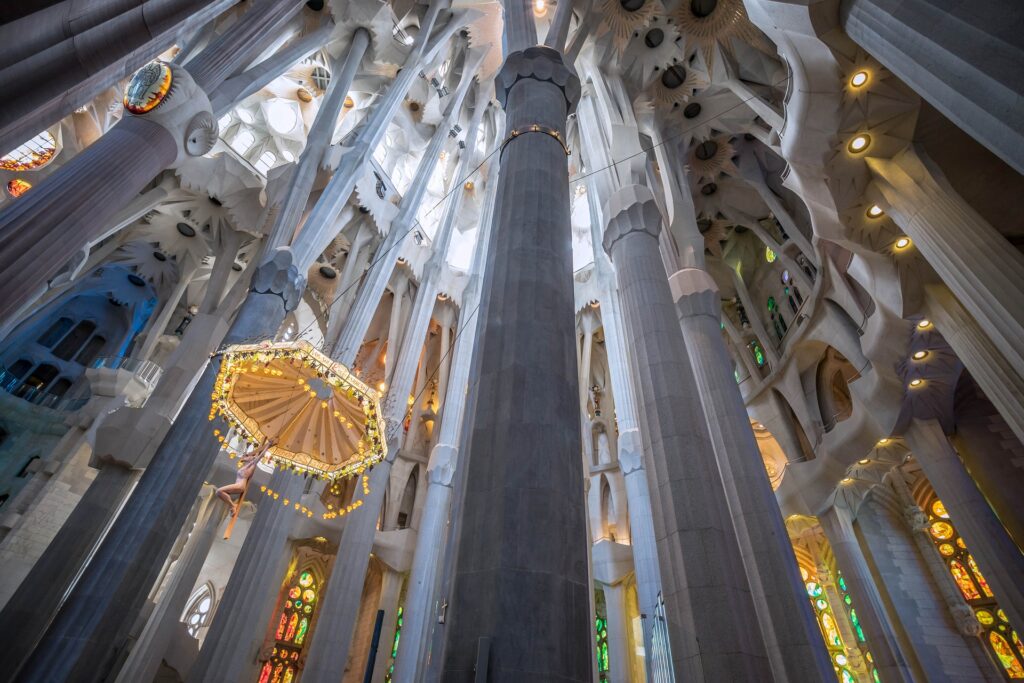
The Sagrada Familia, a basilica unlike any other, has been under construction for over a century and remains a work in progress. Gaudí’s vision for this colossal masterpiece is a harmonious fusion of religious symbolism, natural inspiration, and sublime craftsmanship. From the awe-inspiring façade featuring intricate stone carvings depicting biblical scenes to the towering spires reaching towards the sky, the Sagrada Familia is a symbol of Barcelona’s eternal creativity and ambition. Its interior, with an interplay of light filtering through stained glass windows, creates a surreal ambiance, evoking a sense of spirituality and wonder.
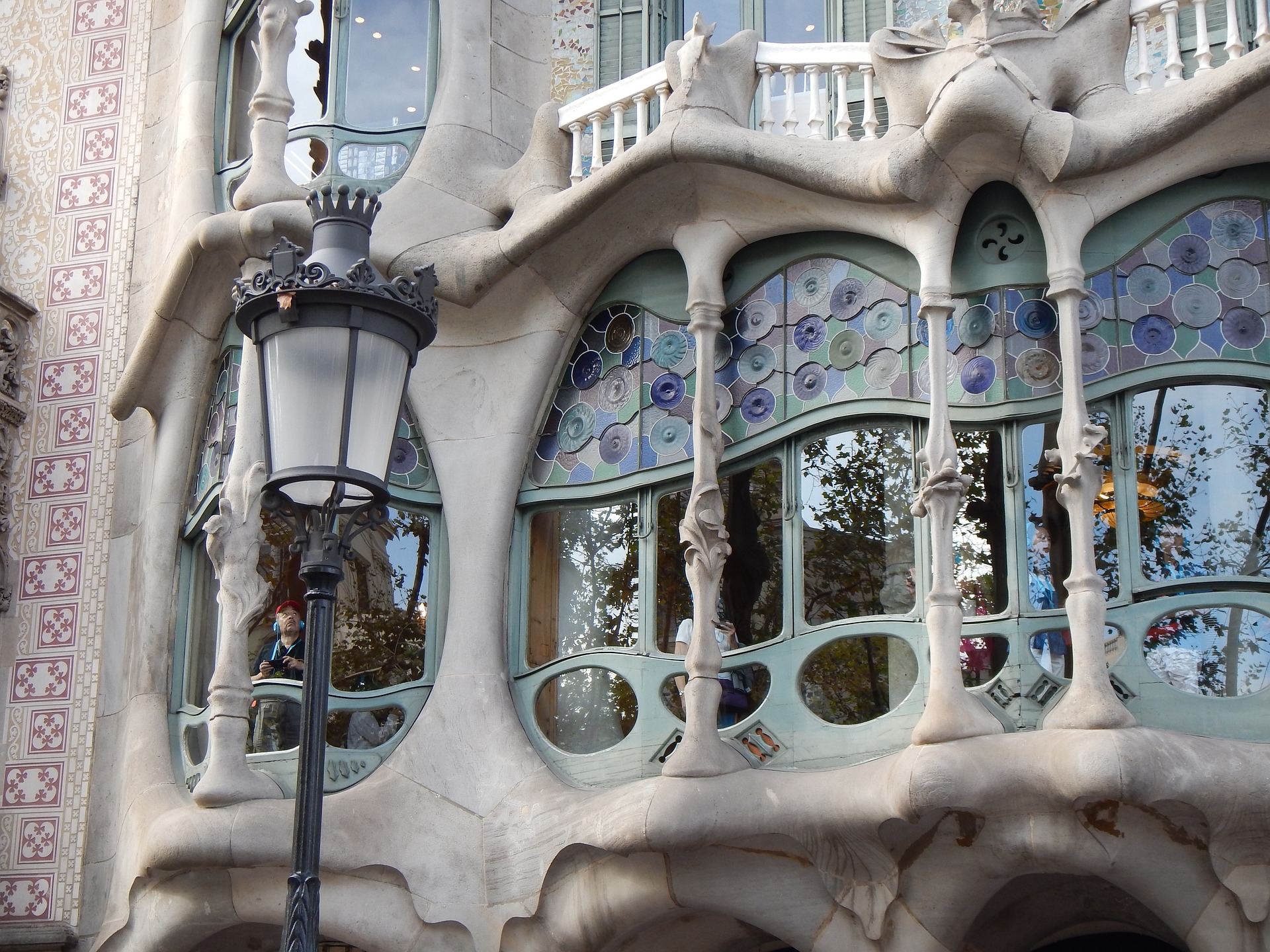
Moving on from the Sagrada Familia, we encounter another Gaudí masterpiece, the Casa Batlló. This residential building, located on Passeig de Gràcia, is a celebration of whimsy and imagination. Its undulating façade, resembling an ethereal dragon’s back, adorned with colorful ceramic tiles and intricate ironwork, makes it a true gem on Barcelona’s architectural canvas. Inside, the fluidity of forms continues with curved walls, columns reminiscent of bones, and an enchanting rooftop terrace offering panoramic views of the city.
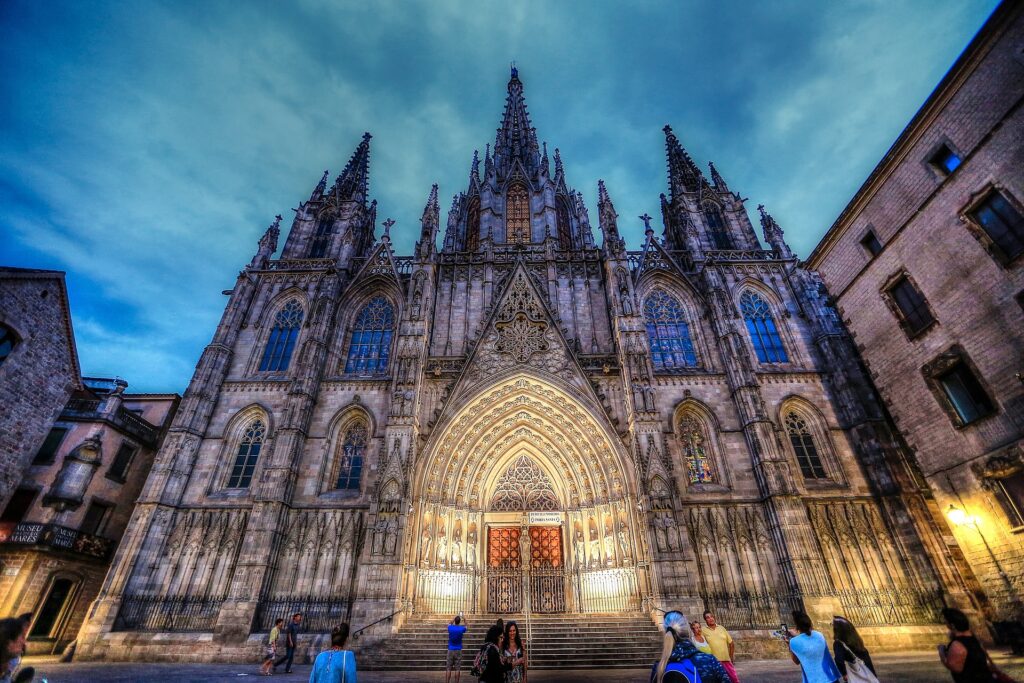
From Gaudí’s enchanting works, we transition to the charming Gothic Quarter, Barri Gòtic, where the city’s medieval heritage comes to life. This labyrinthine neighborhood is a treasure trove of Gothic architecture and narrow, winding alleyways that ooze with history. Upon entering the Gothic Quarter, one is greeted by the grandeur of the Barcelona Cathedral. Its intricate façade, adorned with gargoyles and arches, showcases the mastery of Gothic craftsmanship. Stepping inside, the soaring nave, intricate stained glass windows, and tranquil cloister transport visitors to another era. The labyrinthine streets of the quarter reveal hidden squares, quaint courtyards, and majestic churches such as Santa Maria del Mar, a magnificent example of Catalan Gothic architecture.
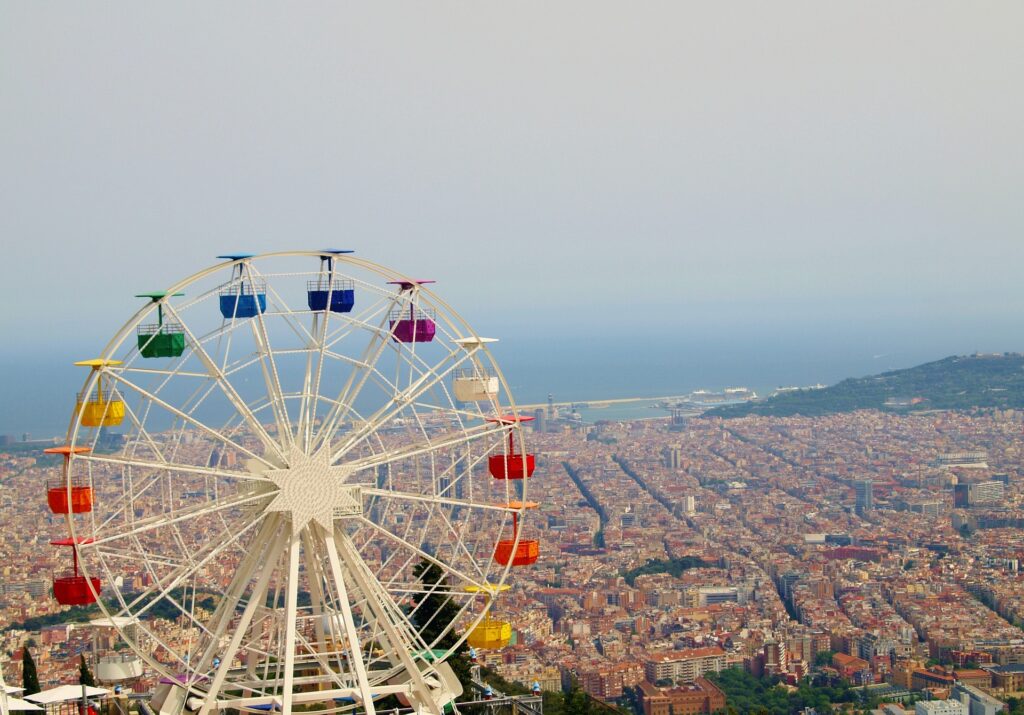
Leaving behind the Gothic Quarter, we find ourselves in the modernist paradise of the Eixample district. Here, Gaudí’s influence is ubiquitous, and the streets come alive with a symphony of color and creativity. A prime example of this is Casa Milà, also known as La Pedrera. Its undulating stone façade, adorned with wrought iron balconies that seem to defy gravity, captures the imagination. The rooftop, adorned with chimneys resembling medieval knights, offers a surreal landscape against the backdrop of the city, while the interior takes visitors on a journey through time and space with its fluid forms and imaginative designs.
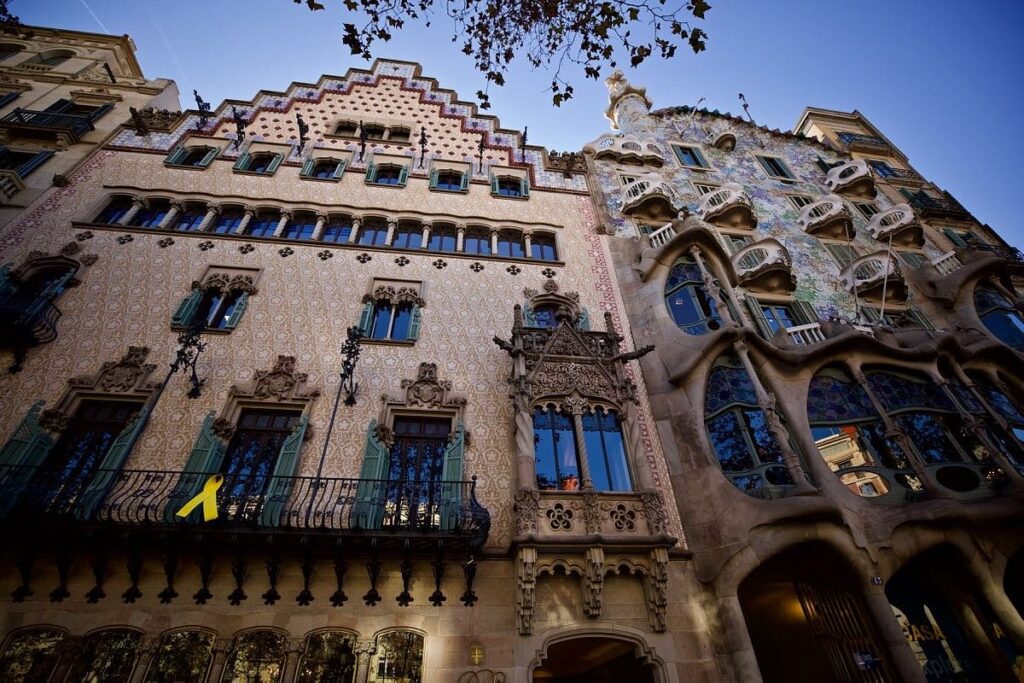
Just around the corner stands Casa Amatller, an architectural gem designed by Josep Puig i Cadafalch. This corner building showcases a blend of Catalan Gothic and modernist elements, with its stepped gables, ornate turrets, and intricately adorned windows. Alongside Casa Batlló and Casa Lleó Morera, these three buildings form the famous “Block of Discord,” each exhibiting a distinct architectural style that captures the imagination.

No exploration of Barcelona’s architecture would be complete without a mention of the stunning Park Güell. Created by Gaudí, this enchanting park offers a surreal landscape where nature and architecture intertwine. The iconic dragon fountain, the colorful mosaic-covered serpentine benches, and the whimsical gingerbread-like houses at the entrance transport visitors into a fairytale world. The park’s unique blend of Gaudí’s architectural genius and natural beauty provides a serene oasis amidst the bustling city.
Must Visit Odishamagazines
Barcelona’s architectural wonders are not limited to the works of Gaudí or the Gothic quarter. The city boasts a myriad of buildings showcasing diverse styles, from modern skyscrapers to contemporary designs. The Torre Glòries, formerly known as Torre Agbar, captures attention with its illuminated façade resembling a geyser shooting up into the sky, while the W Barcelona Hotel, with its innovative sail-like shape, adds a touch of modern elegance to the city’s shoreline.
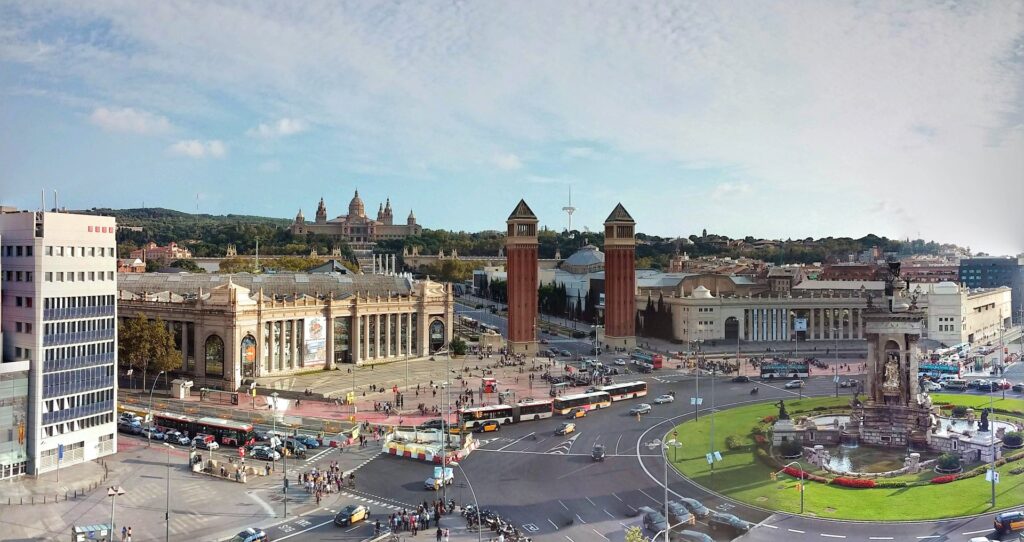
In conclusion, a visit to Barcelona is a journey through architectural marvels that span centuries and styles. From Gaudí’s fantastical creations that define the city’s soul to the grandeur of Gothic treasures and the modernist wonders of the Eixample district, Barcelona is a living gallery, where every corner holds a masterpiece waiting to be discovered. So, grab your camera, put on your walking shoes, and allow yourself to be captivated by the stunning architecture of Barcelona, where art comes alive in every shape and form.
FAQ For Barcelona: Where Architecture Becomes Art
What makes Barcelona a must-visit destination for architecture enthusiasts?
Barcelona is renowned for its diverse architectural styles, from the iconic works of Antoni Gaudí to the Gothic Quarter and modernist buildings in the Eixample district. The city offers a unique blend of historical treasures and innovative designs that captivate visitors.
What are the must-visit architectural landmarks in Barcelona?
Some of the must-visit architectural landmarks in Barcelona include the Sagrada Familia, Casa Batlló, Park Güell, Barcelona Cathedral in the Gothic Quarter, Casa Milà (La Pedrera), and Casa Amatller. These sites showcase distinct architectural styles and offer breathtaking experiences.
How long does it take to explore Barcelona’s architectural gems?
The duration of exploring Barcelona’s architectural gems depends on your pace and specific interests. It is recommended to allocate at least a few days to truly appreciate the city’s architectural wonders. Keep in mind that some sites may require advance booking or have long queues, so plan accordingly.
Are guided tours available to explore the architectural sites?
Yes, guided tours are available for most of the architectural sites in Barcelona. These tours provide insightful information about the history, significance, and design elements of each landmark. They can enhance your understanding and appreciation of the architecture.
Are there any particular times of the year when it’s best to visit Barcelona for architecture enthusiasts?
Barcelona can be visited year-round, but planning your visit during spring or autumn is often ideal. The weather is pleasant, and the city is less crowded compared to the peak summer months. However, keep in mind that popular sites can attract visitors throughout the year, so booking in advance is recommended.
Are there any architectural events or festivals in Barcelona that focus on the city’s architecture?
Yes, Barcelona hosts various architectural events and festivals throughout the year. The most notable is the “48H Open House Barcelona,” where numerous architectural sites, including private buildings, open their doors to the public. Additionally, the “Barcelona Architecture Week” showcases exhibitions, conferences, and activities centered around architecture.
Are Barcelona’s architectural sites accessible for individuals with mobility challenges?
Barcelona strives to make its architectural sites accessible to individuals with mobility challenges. Many landmarks have ramps, elevators, or designated routes for wheelchair users. However, due to the historical nature of some sites, complete accessibility may not be achievable in all areas. It’s advisable to check accessibility details beforehand.

